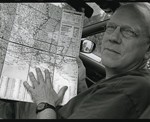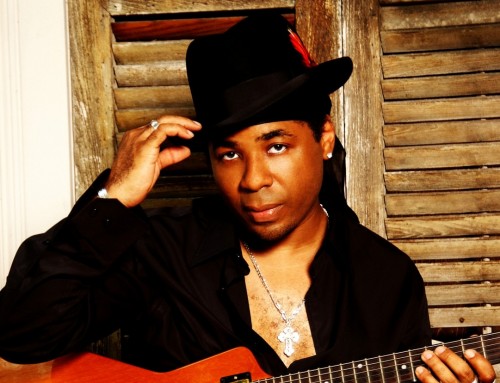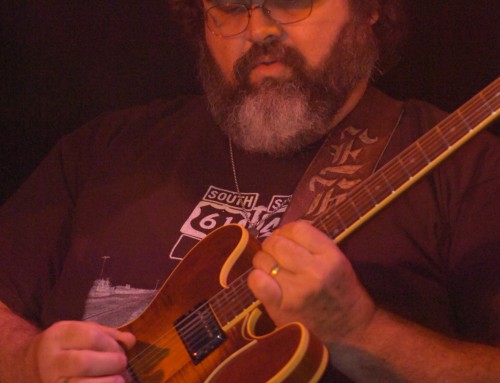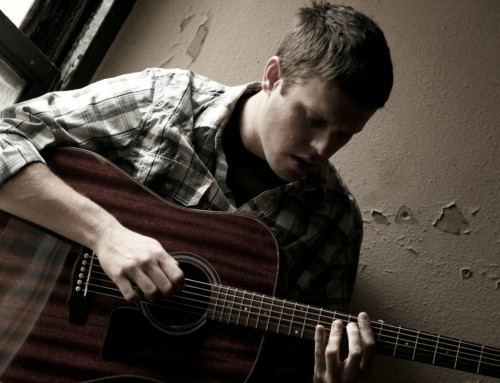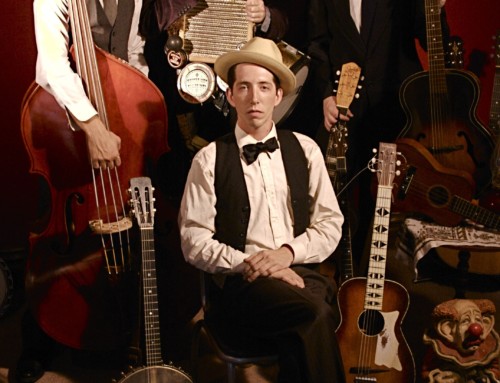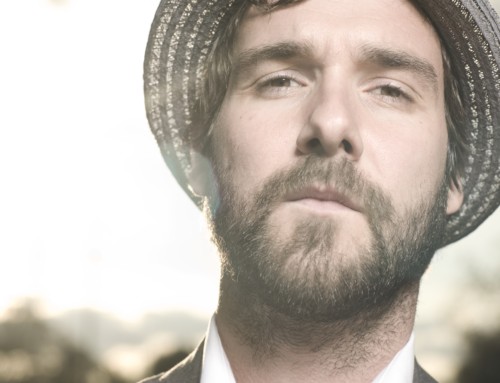Nick Spitzer is professor of Anthropology and American Studies at Tulane University, as well as a folklorist and host of the public radio show American Routes, the program that showcases American roots music and the people who love it. Spitzer is a living encyclopedia of roots music. He can recite the complete history of jazz from its earliest days to today and find a way to make a link to popular artists of the day.
In 2002, Spitzer devoted two hours of American Routes to songs from the Mississippi River region. I figured if there was anyone who could give me a complete overview of music from the Mississippi Valley, it would be Spitzer. He didn’t disappoint. I talked with Spitzer by phone on March 26, 2010.
Why do a show on music of the Mississippi River?
American Routes is based in New Orleans and the river runs through it, as it does St. Louis, of course. We have taken the view that New Orleans, south Louisiana, the Gulf Coast and the lower Mississippi Valley…what some people call the riverine south are all really fundamentally significant in American music. So much music has come from the area over the years. We return to the region endlessly because it is such a source; even the people that migrate out to Los Angeles, New York, Chicago, Detroit carry with them some of the elements of the cultural mixing and creativity that characterizes the area.
So we always return to that, and we’ve done features on Mississippi music, in general, Alabama music, the Gulf Coast, south Louisiana, New Orleans, Memphis—we should do a show on St. Louis. We’ve never done a St. Louis show thought we’ve had a number of St. Louis artists and featured them at different times.
So when you decided to do the show, how did you go about choosing songs to include?
There are several different ways to do that. One is to simply pick artists from the region that we think exemplify the area. Another is to pick songs about the Mississippi River in the titles. You’ve got a lot of songs, I mean Johnny Cash’s Big River is my all-time favorite in some ways, and he’s from the Arkansas Delta. You’ve got Jimmie Rodgers from Meridian, Mississippi doing the Mississippi River Blues. Howlin’ Wolf does one about the Natchez hotel fire.
Beyond the deep roots of the Anglo-American and African-American southern
And things that are newer, like this band up your way from Belleville, Illinois (Wilco) and down below St. Louis, like the Bottle Rockets, people like Henry Townsend, obviously Chuck Berry. I don’t think most of Mile Davis’s [music] is that specifically St. Louis or Mississippi-oriented but you often wonder, even though he was insulated by a middle class family, what he absorbed from it.
We pick artists basically, [if they] are they from that region and they name-check the Mississippi River or they speak to some potential experience of life in the Lower Mississippi Valley.
What music do you think is native to the Upper Mississippi?
Certainly people have migrated up north, along Highway 61. The essential components of the music usually involve having African American gospel and blues, and sometimes jazz forms and then Anglo-American country and gospel. The results end up being things like rockabilly and rhythm and blues, sometimes you have jazz players, sometimes you have rock and rollers like Chuck Berry. So you do get people who go upriver. You know, Johnny Cash name-checks Davenport.
I think that when you’re dealing with the Lower Mississippi you are really dealing with parts of the Old South. You’re dealing with plantation agriculture as a source of population, a population of African Americans, many of whom may have been enslaved at some point, many of them got freed, especially in Louisiana prior to the Civil War, others as freed men after the Civil War. And so you have massive, long-term intimate contact between black and white music makers and populations, so the Lower Mississippi Valley is the focus.
You end up with places like the Mississippi Delta, which is not the only delta on the river, but it’s the one that’s best known perhaps for the blues. You have the music of the Mississippi hill country—the country pipe and drum bands. You end up with Memphis where everyone comes to from that part of Tennessee and the other side of the river from Arkansas and up from the [Mississippi] Delta, and so it becomes a place where the music industry grows. People come to the big city from these fertile areas.
And if I was to further specify it, you go up to St. Louis where you have a real crossroads. St. Louis is one of those unusual places that feels southern, feels northern, feels Midwestern, feels eastern a little bit. It has a fabulous crossroads feel to it. It has important players, old blues guys—Henry Townsend I mentioned. Probably the most prominent for our vernacular forms is someone like Chuck Berry and in more recent times Wilco and the Bottle Rockets.
Down river, New Orleans is the source of so much jazz, and of course afterwards soul, R&B, funk, the works of Fats Domino, the Meters, the Neville Brothers, plus many who continue with traditional jazz.
And there are unusual sidebars of musical culture such as Cajun music in southwest Louisiana and the Creole cousin to Cajun music which is the Zydeco music, which is Afro-Creole country dance music. If you look at it as a totality from the Gulf Coast to the northern rim of the Caribbean, as well as down river migrations from points north and east, you get a real mixing bowl. The focus though ends up being on the lower half of the mixing bowl where all those old line colonial era populations form a baseline of culture and then later music, against which everything is measured. I think if you’re looking at American home grown vernacular music, you can’t find a much stronger place in this whole south coast region.
But the Upper River locations are just that, they’re places that people go to rather than arrive from. They’re receiving points. There’s a blues scene in Davenport and you mentioned the Twin Cities, that’s a hip musical area, obviously you’ve got the folkies—the Dylans and the Spider John Koerners—and you’ve always had an African American population that has done jazz. Prince is, I suppose, the most obvious person from that area. But it’s kind of a place of arrivers rather than long-term settlers.
You could say the same about Chicago. There’s a reason there’s not a polka equivalent of Zydeco in Chicago. The people from southern Louisiana who made Zydeco were Afro-Creole and Cajuns who’d been together since the late 18th century. You spend a lot of time around people in pain and pleasure and you end up with mingled music and identities. Chicago is where most people have come to within the last 75 to 100 years—southern migrants to the north, African Americans, Polish or central Europeans coming as immigrants in the 20th century. They haven’t lived together in the same landscapes, and urban landscapes tend to be a little more barriered off with relatively new migrants and so you get survival genres from Europe and you get arrival genres from the deep south—blues in Chicago in Detroit and upriver to Iowa and to a lesser extent in Minnesota. I don’t know if that explains it, but to me that’s the cultural/geographic/musical reality of how things move through time and space and why we identify the Gulf south and the lower Mississippi Valley as sort of a musical Mesopotamia of the United States.
How did music change as it traveled upriver?
In Minneapolis you have one guy that named himself the Ukrainian Hank Williams; he sings Your Cheatin’ Heart in Ukrainian. A guy in Wisconsin recently wrote a book called Polkabilly in which he describes the co-mingling of roots rock-n-roll with polka music. I think those are interesting mingling. People do go north and carry traditions [and] in addition to the mingling sometimes they create new sounds. You think of Muddy Waters leaving Rolling Fork, Mississippi and ending up in Chicago and some of those Chess sets where he’s plugged in now and not being field-recorded by Lomax like he was in the early 1940s. He’s plugging in with the Chess brothers at Chess records, and, you know, Catfish Blues and all those amazing things he recorded really do represent sort of a new urban aesthetic—electrification, the availability of the recording studio, the individual blues man that might have played all the parts on one guitar…well suddenly he’s got a band, a bass player and a drummer, a lead guitar, maybe a harmonica player, and piano player. So you end up with the city blues of Chicago’s scene and Detroit where the collective is taking over the club scene, it requires dance music, amplified. Encounters in the city changed things.
And the same is true of country music. It goes north to Cincinnati and some of it becomes rockabilly. I think the migration north for the classic genres of country music or blues ends up with more electrification and the movement towards rockabilly and rhythm and blues, and then later forms. So those things happen, but in their happening—that’s why I refer to routes, R-O-U-T-E-S—where you have forms described as roots—R-O-O-T-S—the sort of originating forms of an earlier era—of blues and old-time country music—and then they get up north and as people move from country music to rockabilly and rock and roll, or from old-time country blues to city blues they travel R-O-U-T-E-S and they transform their music based on the context.
It’s part of the story of the continuing creation and re-creation of American music. Jazz is a great contribution of the lower Mississippi Valley to America and the world. Jazz, predominantly from New Orleans, spreads up to Chicago and St. Louis. St. Louis, of course, has Joplin early and ragtime, some of the same forces were at play in various places, but New Orleans is seminal for the jazz that goes to Chicago and LA and New York. And Memphis is seminal for rock and roll because of all the people that come there and record the music.
What musical forms absolutely begin in Mississippi River Valley?
I think jazz certainly has some beginnings in the sense of New Orleans and then going upriver on the riverboats and being performed all the way into Iowa. So I’d start with jazz, and I’d say certainly rock and roll with its association particularly with Memphis but also it has an R&B direction not just in Memphis but also in New Orleans—Fats Domino, Smiley Lewis, Sugarboy Crawford—all these players that played a kind of classic rock and roll in New Orleans with a kind of whip beat accent that makes it sound kind of Caribbean, especially Fats Domino.
But then Memphis is the town where white southerners and black southerners, English speaking mainly, not the Creole-speaking New Orleans world, co-mingled gospel, blues, and country into something that, if you go in the black direction it’s rhythm and blues and in the white direction it becomes rock and roll. You can’t ask for a greater contribution to American and world culture than rock and roll and jazz. They are really the products of the mixing and—I use the word ‘Creolization’—of cultures to make something new out of old parts.
That’s part of American creativity…that these things happen. Working class whites brought gospel and country in contact with blacks, sometimes they were together in sharecropping situations, sometimes they met each other in the cities. Radio in Memphis in particular was a very powerful medium, a black station like WDIA had BB King as a host and Rufus Thomas as a host. People like Elvis hear that music, white kids heard it that way when they were not allowed to be in the same dance hall and concert settings, they could hear DJs playing the music in the privacy of their homes or maybe if they were lucky enough to be in a car with a radio or get a transistor, they could hear all that stuff. So the media began to spread the music back and forth.
Conversely, many African Americans listened to the Grand Ole Opry out of Nashville. Ray Charles speaks of listening to the Opry; Al Green was another one who loved the Opry. So many major black performers listened to the Opry because that’s what was available. There wasn’t as much black music nationally syndicated until a little bit later. Generally speaking, little by little these contacts emerged, and it’s a great story, particularly blues, I think, because the poorest people—black southerners in plantation conditions, sharecropping conditions later—the poorest people, arguably the most disenfranchised—black men—took the classic African inheritance of narrative singing, the commentary on the boss, the commentary on woman, the commentary on the bad social economic conditions. They found a way to express it [through the blues] and the world has never looked back. It’s a miracle of American life that blues emerges and becomes essential to jazz.
It’s sort of like the universal solvent: it’s in jazz, it’s in rock and roll, rhythm and blues, everything, it’s even in sidebar genres like zydeco and Cajun music. It’s everywhere. The notion of the blues and the individual singer as narrator and protagonist in his life where it’s better down the road, where you’ve got to move on and find another woman and find another place to be, the relentless sense of motion and need and complaint and then joy in taking the sorrow and turning it into a dance tune. There is something just absolutely magnificent and magical about blues’ ability to rhetorically take care of pain and advance it into a story line and an entertainment and an expression that ultimately the United States and the whole world is effected by.
To me that’s just one of the great stories of American culture. I think it’s one that every kid needs to learn in school now; we don’t always teach it very well. Blues still have a stigma of kind of being backwards and lowdown and it was that, but that doesn’t mean it’s not great and important socially. It just happens to come from very humble, community vernacular sources.
But, you know, I think an awful lot of the best stuff that America’s ever produced comes from those sources. They don’t have to come from symphony halls and high up museums; I’m not against those, but I think in the end our story [America] is of continuing liberation from our own problems and growth of freedom and creativity. In a plural society we end up with the blues rising to the top. So much of our popular music is shot through with blues and elements of country.
What is on the cutting edge now?
The blues and the roots of rock and roll —rhythm and blues—continue to contribute to modern American music. I think we went through a period in the 90s where an awful lot of indie rock tried to separate itself from the black vernacular, either consciously or unconsciously. The bands became very, very white in some ways. I think we’ve moved past that.
I would say that you’re beginning to see some very interesting things happen. Young black kids like the [Carolina] Chocolate Drops, who are all college-educated kids, are playing the old black string band music that came from the Mississippi Delta and from the Piedmont region of the southeastern US. They play old jazzy tunes and rag tunes and pop tunes and blues. And these are all guys in the 20s and early 30s playing the music. So you’re beginning to get sort of a new black intelligentsia that’s digging into that stuff, almost like a classical form.
In terms of country music, we’ve had this long string of alternative country with sources in Austin and arrivals in Nashville where the music industry is located. So you end up in Nashville with people like Gillian Welch to take the old-time country music and turn it to modern issues and problems and ideas and almost surrealistically recreate it as poetry of another time. I think Gillian’s great.
You’ve got somebody like Lucinda Williams who’s a little more rock and roll who takes the music from her upbringing down in Louisiana and Mississippi and throws in blues narratives in a lot of her songwriting. I think she’s great, too.
And you’ve got a generation of younger piano players from Mississippi like Eden Grant. Down in Louisiana we’ve got some wonderfully ironic piano players like Bobbie Lounge. Major festivals in the Arkansas Delta devoted to blues, the Memphis music festivals, the New Orleans Jazz and Heritage Festival—all these places provide space in which to perform and to carry some things forward. Not everyone is a famous new arriving player, but many, many people in clubs and dance halls and other locations are continuing to make these classic lower Mississippi Valley/Gulf style genres of blues, jazz, country, and rockabilly. They’re alive and kicking, and they’ve spread all over the country, and they’ve spread all over the world.
You can go to Scandinavia and hear good New Orleans-style traditional jazz. You can go to various places in Europe and hear great rockabilly. These are not people from the original populations playing the music but they are people who have picked it up and taken it around the world. Japan has a love of country music. The love of jazz in France and Germany is no secret. In some way, the European countries and Japan have taken American music and recreated it, sometimes copying it, sometimes transforming it, but really appreciating it, even when we didn’t, when we allowed a lot of our music to drivel into crappy pop and lowest common denominator stuff for Clearchannel Radio.
But back home, here, below the radar there are many, many people that play this music, and it gives me a lot of hope to see people come out. We have a young fiddler in Louisiana right now, 24-year old Cedric Watson, self-taught, speaking Creole French, plays fiddle and accordion, just when we thought there’d be no more Creoles of color playing that music. And this kid’s a virtuoso.
Everywhere I turn I see this. And I think the notion of a star system doesn’t always serve these vernacular forms well. That doesn’t mean I don’t think Alicia Keys isn’t a brilliant player, I think she’s fabulous. I love Beyoncé. I love a lot of that music. But I think what’s happening with the Internet, and with people being aware of this music from before and recreating it for themselves, their own little groups and friends, their careers within these realms, there’s a lot of it being played that’s not being put on the equivalent of what Sun Records was in Memphis or Chess Records in Chicago. Instead it’s just become the music of American life as a kind of a large minority of people that play the music, and they’re not the pop stars. They’re just the people that continue to live in these areas or live elsewhere and appreciate it.
I think this is kind of the best of times in a weird way. There’s so much available now. They don’t all make big careers out of it, but there’s a lot going on that’s pretty amazing. I just feel like what the rest of the country needs—desperately—is to get off moving it to some highly stylized, popular or classicized version as part of our national cultural policy. I think we need to start sending zydeco to French-speaking West Africa. I think we need to start sending jazz more places again and make it the great players of jazz not these sort of auditioning ensembles. I’d love to march a traditional New Orleans brass band across Tiananmen Square.
When we negotiate with North Korea we send in the New York Philharmonic, but that’s harmless. All of the elites of Asia play classical music of the West as a measure of showing their connection to a certain level of culture in the world. But if we put a brass band marching through Pyongyang or Beijing we’d be showing African Americans improvising on a street playing together without a script and parading in a public place and making a public place their own. I think that’s an unbelievably powerful freedom statement to be able to walk down the street and to play music out of your head that enfolds blues, that enfolds hymns, that enfolds popular song, and enfolds parade music, and ultimately becomes jazz. It’s an American story and I think we need to tell the American stories of jazz and blues and rock and roll and gospel music and cowboy song and Tejano music and Cajun/zydeco and all the regional cultures and the creative freedoms to continue culture and make new culture. It’s the undercurrent of a lot of what this country has been.
You can stream prior episodes of American Routes here.
If you interested in reading more about the history of American roots music, here are some recommendations from Spitzer, plus one from me:
Kip Lornell: American Roots Music
Robert Palmer: Deep Blues (Mississippi Delta region)
Jason Berry: Up From the Cradle of Jazz (New Orleans music after WWII)
Peter Gordon: It Came from Memphis
Peter Guralnick: Sweet Soul Music (around Muscle Shoals, AL)
James Leary: Polkabilly: How the Goose Island Ramblers Redefined American Folk Music (musical minglings of the Upper Midwest)
Kevin Belford: Devil at the Confluence (focuses on the underappreciated contributions of early St. Louis blues artists)
